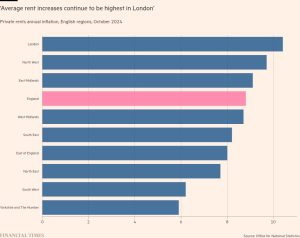Whoever wins, America will still need to turn itself round
Unlock the US Election Countdown newsletter for free
The stories that matter on money and politics in the race for the White House
On Tuesday, Americans will vote in what will probably be the most consequential presidential election of our lifetimes. The candidates couldn’t be more different, but the challenge left to them will be the same — how to renew a sense of national purpose and dynamism in a country that may well have reached the peak of its competitive powers.
America is still enjoying its post-pandemic growth spurt. But major economic, political and social headwinds lie ahead. Partisan politics will not end with this election; indeed, they may get worse. Productivity is slowing, the population is ageing, social media silo-bubbles create division and the country faces competitive threats from China and other emerging markets, which are increasingly banding together in their own post-Washington consensus alliances.
Yes, the US still has a dynamic business environment, great universities, rich natural resources and a relatively robust industrial base. Yet it struggles with bureaucracy and inefficiency in both the public and private sectors, a self-interested elite, a workforce that isn’t tooled up for the 21st century and a desperately weakened sense of national unity. Most importantly, America today no longer has a common purpose, or even a sense of what the common good might be.
Can the ship be turned? Such recoveries are rare but possible, according to a Rand Corporation report entitled “The Sources of Renewed National Dynamism”. This looks at hundreds of years of history to examine how, or if, great powers in crisis can regain their sense of purpose.
It’s a sobering read. Countries are seldom able to reverse a competitive decline once it has begun. But a handful have been able to anticipate such a decline (as measured by a variety of factors from share of global GDP, trade and military power to international leadership and cultural influence). They could then work to avert it, and come up with new, sustainable systems for growth and shared prosperity.
Two illustrative examples were Britain in the 1840s, and the US after the 1890s. During these periods, the countries were able to address multiple economic, political and social problems with major reform efforts that led to national renewal. Victorian Britain, for example, struggled with the negative environmental and labour impacts of industrialisation, as well as growing inequality, and political corruption. Post Gilded-Age America had many of the same woes.
Yet both countries were ultimately able to pass sweeping reforms that improved workers’ rights and labour standards, increased access to education, enfranchised new groups of voters and so on. This ultimately led to decades of broad-based growth and renewed national purpose.
How did they do it? First, they were able to diagnose the problem before it became unsolvable. As the Rand report notes, there are multiple examples of failing states, such as the Ottoman Empire and the Soviet Union, that didn’t even understand their problems until decline was assured. In this sense, the US today may have an advantage, since it’s widely understood on both sides of the aisle, and among all social classes, that the country is facing major challenges from within and without.
Still, correct diagnosis alone isn’t enough to stave off decline. Countries also need a problem-solving mindset, and wide-ranging efforts to deal with their various challenges. The national renewal of Victorian Britain and Progressive-era America reflect this point. In both cases, political and business figures, activists, trade unions and various grassroots movements were part of a robust national discussion about reform. I’d argue that this factor is also present in the US today where, despite political polarisation, there is a rich bottom-up debate about how the country should change.
Some state capacity and a functioning government are crucial for any reform effort (here’s hoping that Donald Trump won’t degrade those things if elected again). But perhaps the most crucial factor in national renewal is buy-in from both elites and the average citizen. In much of the history explored in the Rand report, renewed national dynamism overlapped significantly with the rise of public-spirited elites. Whether it be landed aristocrats in 19th-century Britain who supported reforms, or turn of the century American Progressives who understood that their ability to make money might be threatened in a country so unequal and socially unstable, elite buy-in to reform efforts was crucial for national renewal.
Does America have that kind of buy-in today? On this point, I feel much more pessimistic. While groups such as the Patriotic Millionaires and the Never-Trump contingent of the Republican party are a step in the right direction, I hear from far too many privileged people who simply won’t put the public good over their own tax rate. Experts who take huge pay cuts to go into public service are denigrated, and there is far too much cynicism about our ability to change the country for the better.
America has big problems, but it still has huge strengths. Our science and technology, our entrepreneurialism, our strong consumer base, and our can-do spirit are the envy of the world. But they aren’t laurels to rest on. I pray the next president can be honest about what’s broken, and bring Americans together to fix it.
#wins #America #turn





